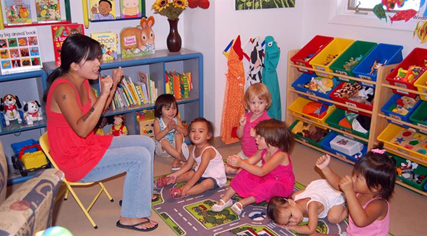11.2: Supporting Children’s Learning
Much of children’s development in the creative arts during the preschool years proceeds naturally and needs only fertile soil, along with time, to grow. Children initiate many behaviors and routines when they simply go about their play. They practice many skills along the way, and supportive physical and social–emotional development occurs as children progress from ages three to five. At the same time, their drawings become more mature and expressive, their pretend characters and settings become more complex and social, their musical expression skills grow with their muscular coordination and abilities to discern beat, tone, and melody, and the movements they coordinate with music or simply orchestrate in silence gain in surety and expressive complexity.
A primary responsibility of the preschool teacher is to let such natural developments occur. Child-initiated artistic activity is valuable not only because it is so enmeshed with a host of developments for children, but also because children cherish ownership of much of what they do. Children follow their hearts and minds to what interests them and to areas where they experience increasing mastery. They draw as they will and may not be interested in exactly what thing, animal, or person the creation represents. They may hold firm to their idea of how to draw a tree, behave like a bear, or sing like a bird; it often becomes important for teachers and other adults to avoid critiquing such expressions (except where the child may solicit advice). Teachers would do well to let the child experiment with, and perhaps revise, her expressions as the need occurs or as maturing views of the world and its possible representations take hold.

Along with child-initiated art, a complementary perspective needs reinforcement. This perspective recognizes the ways that teachers can and should support young learners in their development. An element of this scaffolding is creating conditions in the preschool program in which interesting and important connections between the arts and other developments can take place. Capitalizing on language and communication opportunities is another example; placing children in settings where cooperation is important and where cooperative dispositions and skills may grow is yet another. Some art activities can help children become aware of and reflect on differences among people, become exposed to diverse art forms from different cultures, and create a common platform of learning for children between home and school. These considerations will set the stage for children’s growth and interest in the arts.[1]
- The California Preschool Curriculum Framework, Volume 2 by the California Department of Education is used with permission ↵

